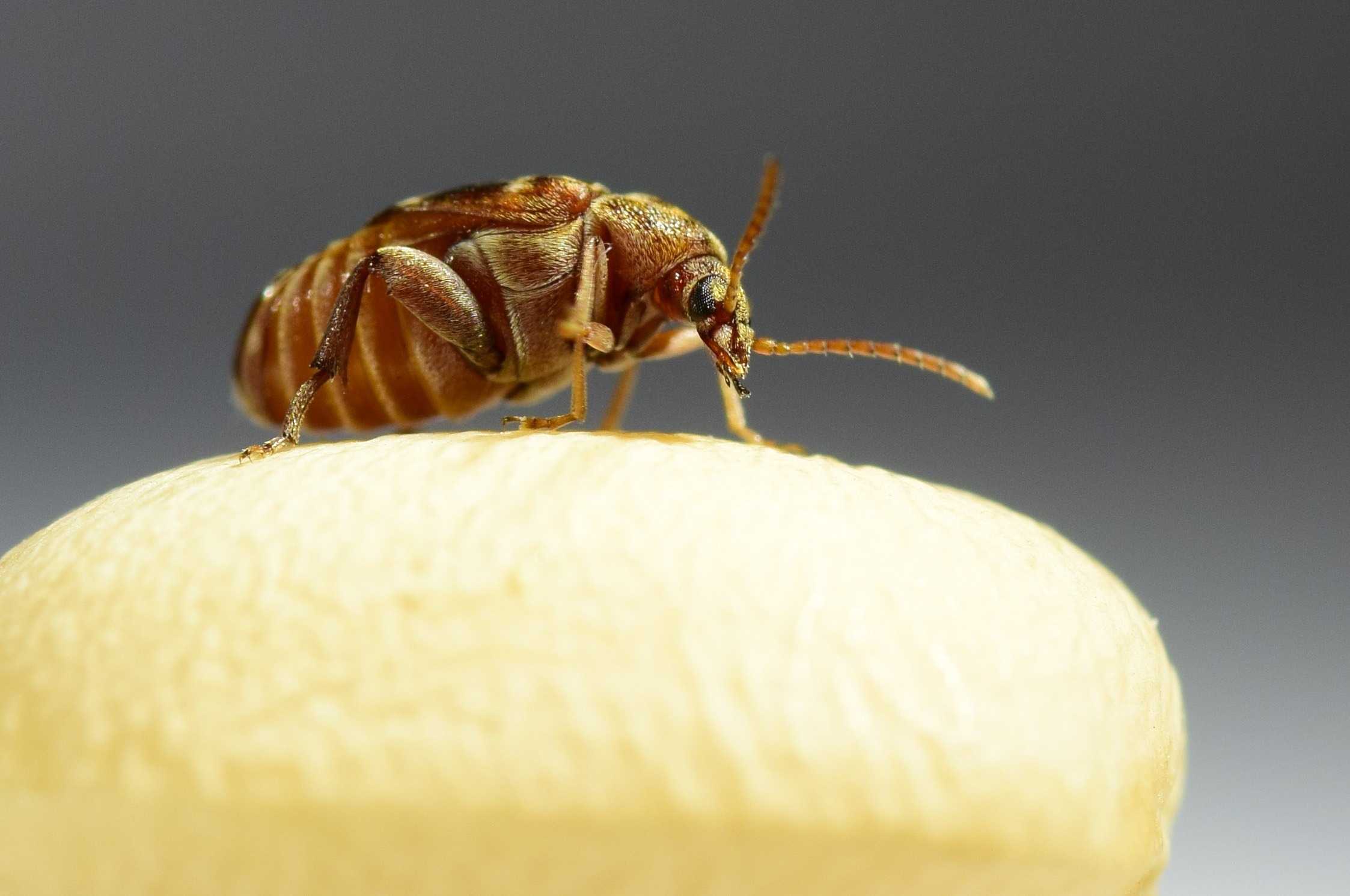Agricultural loss from pests is underestimated – models are missing evolutionary processes
Pests adapted to increasing temperatures that focus on surviving rather than reproducing, are more successful in both – creating a double blow for the crops they eat.
Warming climates will increase growth rates of cold-blooded pest species in many parts of the world, statistical models predict. These models often do not account for evolutionary processes, which typically are rapid in pest species.
A recent study led by Uppsala University researcher David Berger, with help from the SciLifeLab National Genomics Infrastructure (NGI), shows that accounting for evolutionary responses to temperature in these models can have vastly different results, and magnify agricultural loss under future climate change.
“In particular, predictions for tropical regions, where agricultural practices are widespread and make up a large part of the local economy, are significantly worse if we account for pest species’ ability to genetically adapt to climate warming,” says David Berger. “Predicting the future impact of pest species represents a significant and very important challenge with strong implications for both world economy and human health”.
The National Genomics Infrastructure generated RNA sequencing, RNA-seq, libraries and sequenced them on their high throughput sequencing platform (more about the method in the Q&A box below).
“It’s incredibly rewarding to contribute to research that addresses such a critical issue as climate change. Understanding how pest species adapt to warming temperatures is crucial for developing strategies to mitigate the negative impacts on agriculture and have great societal importance” says Jessica Nordlund, Managing Director at the SNP&SEQ Technology Platform, part of NGI.
A double blow
The researchers used lab strains of the seed beetle, Callosobruchus maculatus, collected from three geographically separated regions of the world, to understand how organisms devote resources between the competing demands of reproducing and surviving.
This showed that the evolutionary history of pest populations, their genetics, can matter for their evolution and the predicted impact they may have on crops in the future. In the populations better adapted to high temperatures, the larvae eat more and reach a bigger size. This increased size gave them enough energy for both surviving and reproducing. So even though they focused on surviving rather than reproducing, they were – perhaps counterintuitively – more successful in terms of reproduction in the end, creating a “double blow” on the plants they eat.
“This could be a likely scenario for populations living on agricultural plantations, where there’s an abundance of host plants – crops – to eat. The access to food is not limited on plantations, so this strategy may be successful and associated with insect populations that live there,” says David Berger.
Top photograph: Mareike Koppik
Read the study in it’s entirety.
Learn more about the SciLifeLab National Genomics Infrastructure.
Q&A – RNA sequencing & high throughput sequencing
Below, Jessica Nordlund, Managing Director at the SNP&SEQ Technology Platform, part of the SciLifeLab National Genomics Infrastructure (NGI) answers questions about some of the techniques used in the study.
Q: What methods or techniques from SciLifeLab were used?
A: NGI’s contribution was to generate RNA sequencing (RNA-seq) libraries and sequence them on our high throughput sequencing platform (Illumina NovaSeq). RNA-seq is a cutting-edge method in genomics that involves determining the sequence and abundance of genes expressed in a given sample. This approach generates massive amounts of sequence data, allowing the researchers to analyze the expression patterns of genes in large sets of samples.
RNA-seq is a powerful technique that is widely used across various fields in biology and is the most popular method offered by NGI. It provides a comprehensive snapshot of gene activity in a sample at a particular time. This study highlights the power of RNA-seq in addressing pressing challenges in societally important fields such as agriculture and climate change.
Q: Can you in layman’s terms explain the technique?
A: Imagine mRNA as the blueprint for building proteins within a cell. RNA-seq is like taking a picture of all the active blueprints in the cell at a given moment. This allows researchers to understand which genes are turned on and off, providing insights into how the organism is responding to its environment.
Q: What are some challenges with a study like this (from your perspective)? How do you overcome those?
A: RNA quality is a significant challenge, especially when working with insect samples. RNA is very delicate and can degrade easily. To overcome this, careful sample collection and handling procedures are essential.
At NGI, we have extensive experience in working with RNA samples from various organisms, tissues and cells, and are well-equipped to handle even the most challenging samples. In this project, we were very happy to have been able to generate high-quality RNA-seq data, despite the potential challenges associated with insect samples.





